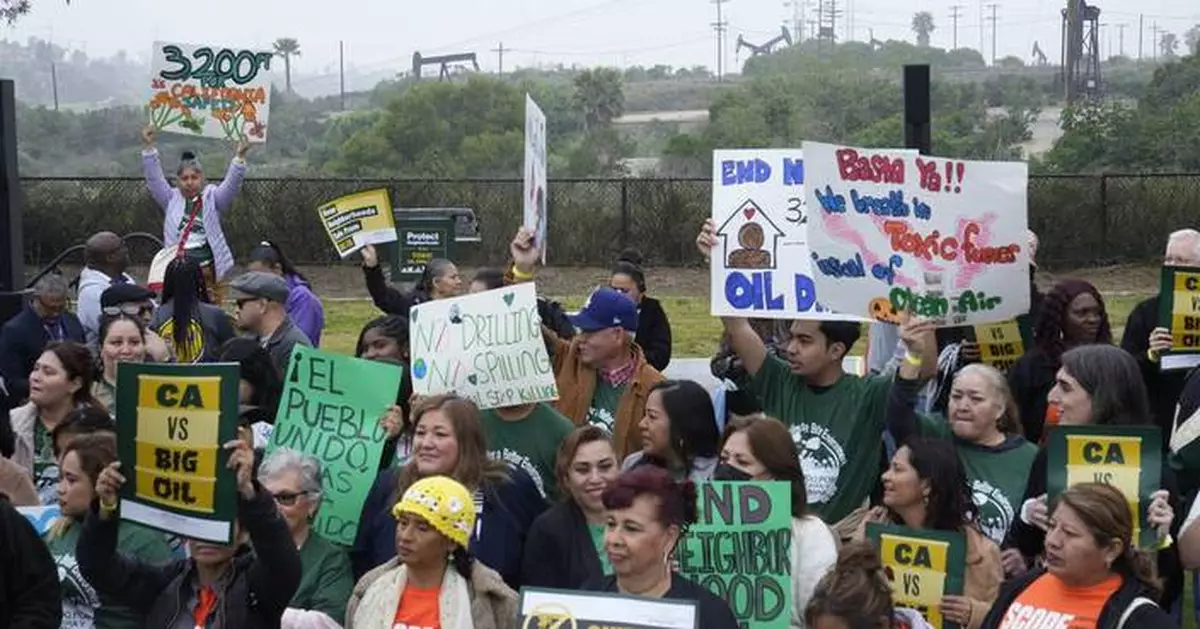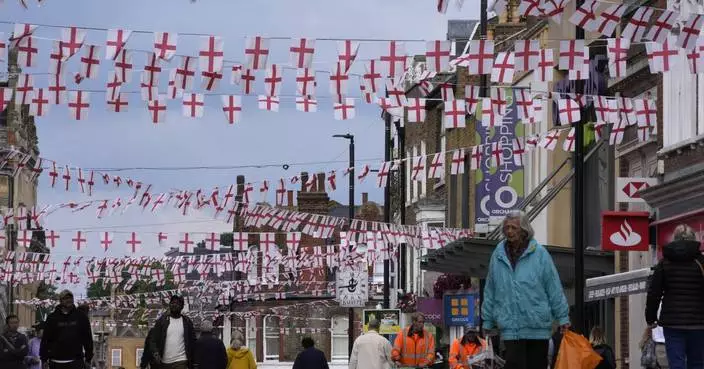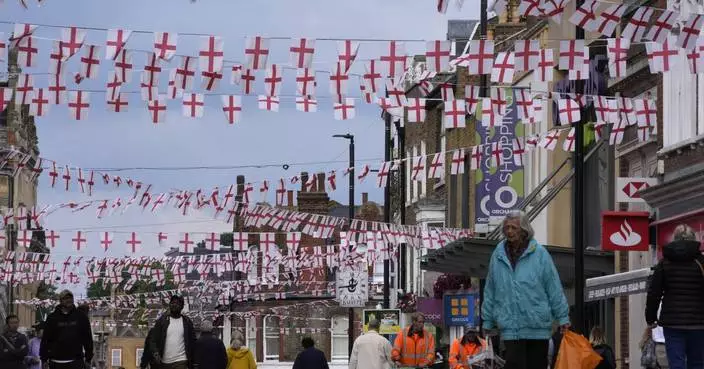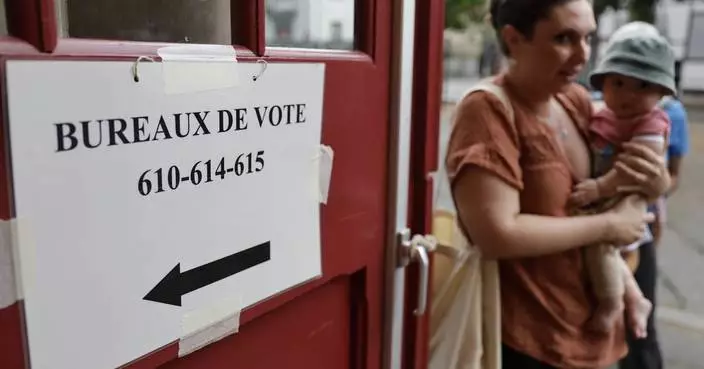SACRAMENTO, Calif. (AP) — A California law that bans drilling new oil wells near places like homes and schools will take effect after the oil industry on Thursday withdrew a referendum from the November ballot asking voters to overturn it.
The law, first passed in 2022, had been delayed because the California Independent Petroleum Association gathered enough signatures for the referendum.
On Thursday the association withdrew the referendum just hours before the deadline for it to get on the ballot. Instead, it plans to file a lawsuit asking a judge to block the law.
The withdrawal slims down what had been a crowded November ballot. Also on Thursday, proponents withdrew ballot measures about state labor law violations, financial literacy for high school students and a tax increase for pandemic research.
California was once the nation's leading oil producer over a century ago, but it has since been surpassed by Texas, New Mexico, North Dakota, Colorado, Alaska and Oklahoma.
The oil industry has still remained a powerful force in state politics, known for having its way at the state Legislature. But that influence has been declining, along with the state's oil production.
The 2022 law bans drilling new wells within 3,200 feet (975 meters) of “sensitive receptors,” defined as homes, schools, hospitals, nursing homes, retirement homes, prisons and any business that is open to the public.
In asking voters to block the law, the oil industry's strategy was to portray it as an “energy shutdown.” The argument was that it would only increase the state's dependence on foreign oil and contribute to California's high gas prices, which remain among the highest in the country.
Supporters of the law countered by saying oil wells spew harmful pollution that increases the risk of ailments like asthma and cancer.
The California Independent Petroleum Association disputed those claims. But it decided that “supporters of the energy shutdown can make unfounded claims in the press and in paid advertisements, but they can't make those claims in court without evidence,” said Jonathan Gregory, the association's president and CEO of oil and gas company RMX Resources.
“That's why we are pivoting from the referendum to a legal strategy,” Gregory said.
Supporters of the law took the news as an admission of defeat from the oil industry. Mabel Tsang, political director for the California Environmental Justice Alliance, said passing the law and seeing the referendum removed was the result of a “multiple decade fight” for communities near oil drilling. The withdrawal also came after supporters launched a statewide campaign in March to keep the law, with backing from the likes of Arnold Schwarzenegger, Jane Fonda and Gov. Gavin Newsom.
“Big oil saw what they were up against — and they folded, again,” Newsom said in a statement. “No parent in their right mind would vote to allow drilling next to daycares and playgrounds.”
The Legislature had been applying pressure to the oil industry, too. Assemblymember Isaac Bryan, a Democrat from Los Angeles whose district includes the largest urban oil field in the United States, introduced a bill that would have fined companies $10,000 per day from operating wells near homes and schools that produce less than 15 barrels per day.
Bryan, in an interview, said he agreed to limit the scope of that bill to just the oil field in his district, known as the Inglewood Oil Field.
“That was the gift from me to them in exchange for them agreeing to pull back this measure,” Bryan said.
State Sen. Lena Gonzalez, a Democrat from Long Beach who authored the ban on new oil wells, said she was confident the law would withstand a lawsuit. She said the law finally taking effect will mean cleaner air for her community, which includes her three sons.
“I never thought this would actually happen because of the power and influence sometimes in this building,” she said, speaking in the Capitol. “This time, oil didn’t win, and this time our community won.”
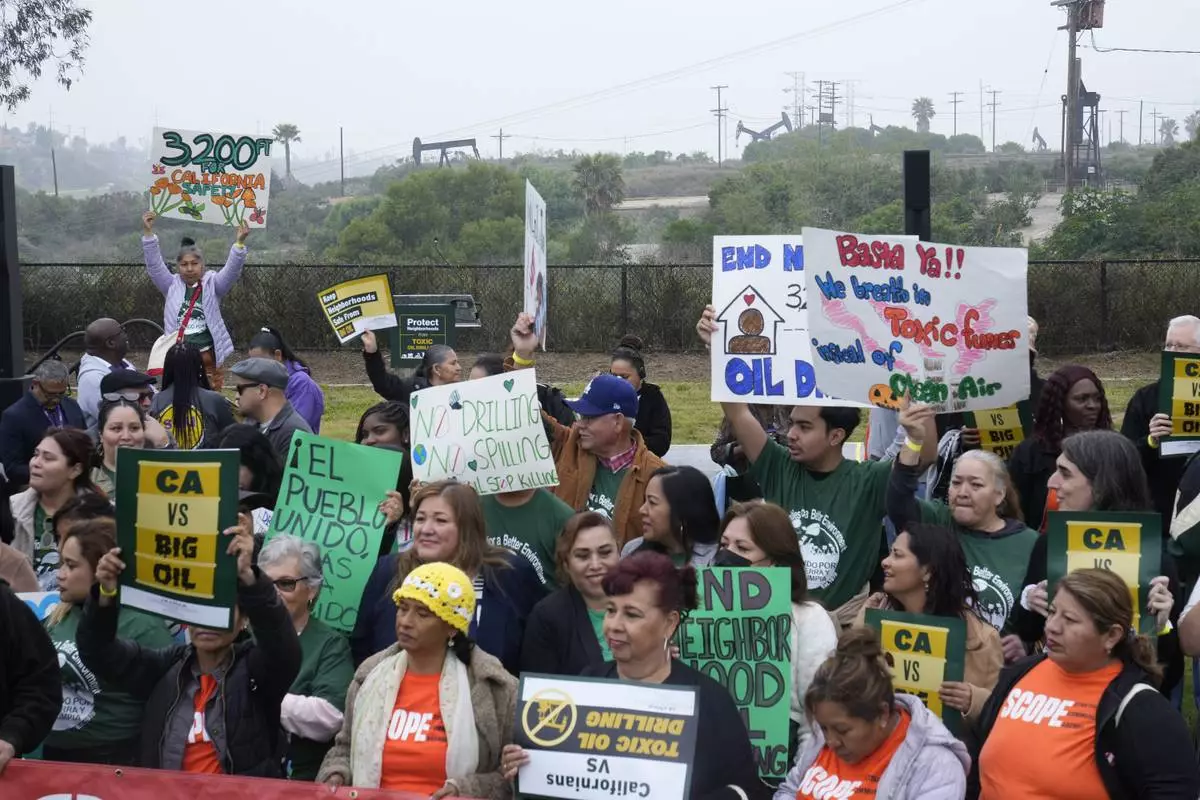
FILE- Members of Campaign for a Safe and Healthy California coalition campaign for Keep The Law (SB 1137) in Inglewood, Calif., on Friday, March. 22, 2024. The California Independent Petroleum Association says it will withdraw a referendum asking voters to block the law, clearing the way for it to take effect. The association announced Wednesday, Jun26, 2024 it plans to file a lawsuit to ask a judge to block the law instead. (AP Photo/Damian Dovarganes, File)
SAN JUAN, Puerto Rico (AP) — Hurricane Beryl is forecast to strengthen into a powerful Category 4 storm as it approaches the southeast Caribbean, which began shutting down Sunday amid urgent pleads from government officials for people to take shelter.
Hurricane warnings were in effect for Barbados, St. Lucia, Grenada, and St. Vincent and the Grenadines.
“This is a very serious situation developing for the Windward Islands,” warned the National Hurricane Center in Miami, which said that Beryl was “forecast to bring life-threatening winds and storm surge … as an extremely dangerous hurricane.”
Early Sunday morning, Beryl was located about 465 miles (750 kilometers) east-southeast of Barbados. It was a Category 2 storm with maximum sustained winds of 100 mph (155 kph) and was moving west at 21 mph (33 kph).
Two hurricane hunters were en route to the storm to gather more details about its intensity, according to the National Hurricane Center.
Beryl is expect to pass just south of Barbados early Monday and then head into the Caribbean Sea as a major hurricane on a path toward Jamaica. It is expected to weaken by mid-week but still remain a hurricane as it heads toward Mexico.
Forecasters warned of life-threatening storm surge of up to 9 feet (3 meters) in areas where Beryl will make landfall, with up to 6 inches (15 centimeters) of rain for Barbados and nearby islands.
Long lines formed at gas stations and grocery stores in Barbados and other islands as people rushed to prepare for a storm that has broken records and rapidly intensified from a tropical storm with 35 mph winds on Friday to a Category 1 hurricane on Saturday.
Warm waters were fueling Beryl, with ocean heat content in the deep Atlantic the highest on record for this time of year, according to Brian McNoldy, University of Miami tropical meteorology researcher.
Beryl marks the farthest east that a hurricane has formed in the tropical Atlantic in June, breaking a record set in 1933, according to Philip Klotzbach, Colorado State University hurricane researcher. If Beryl’s winds reach 125 mph, it would be the second earliest such storm in the Atlantic on record, surpassing Audrey in 1957, he said.
In addition, if Beryl reaches a Category 3, it would only be the third storm to do so in the Caribbean prior to August; Dennis and Emily both did so in July of 2005, according to Klotzbach.
“We have to remain vigilant,” Barbadian Prime Minister Mia Mottley said in a public address late Saturday. “We do not want to put anybody’s life at risk.”
Thousands of people were in Barbados for Saturday’s Twenty20 World Cup final, cricket’s biggest event, with Mottley noting that not all fans were able to leave Sunday despite many rushing to change their flights.
“Some of them have never gone through a storm before,” she said. “We have plans to take care of them.”
Mottley said all businesses should close by Sunday evening and warned the airport would close by nighttime.
Kemar Saffrey, president of a Barbadian group that aims to end homelessness, said in a video posted on social media Saturday night that those without homes tend to think they can ride out storms because they’ve done it before.
“I don’t want that to be the approach that they take,” he said, warning that Beryl is a dangerous storm and urging Barbadians to direct homeless people to a shelter.
Echoing his comments was Wilfred Abrahams, minister of home affairs and information.
“I need Barbadians at this point to be their brother’s keeper,” he said. “Some people are vulnerable.”
Meanwhile, St. Lucia Prime Minister Philip J. Pierre announced a national shutdown for Sunday evening and said schools and businesses would remain closed on Monday.
“Preservation and protection of life is a priority,” he said.
Caribbean leaders were preparing not only for Beryl, but for a cluster of thunderstorms trailing the hurricane that have a 70% chance of becoming a tropical depression.
“Do not let your guard down,” Mottley said.
Beryl is the second named storm in what is forecast to be an above-average hurricane season, which runs from June 1 to Nov. 30 in the Atlantic. Earlier this month, Tropical Storm Alberto came ashore in northeastern Mexico with heavy rains that resulted in four deaths.
The National Oceanic and Atmospheric Administration predicts the 2024 hurricane season is likely to be well above average, with between 17 and 25 named storms. The forecast calls for as many as 13 hurricanes and four major hurricanes.
An average Atlantic hurricane season produces 14 named storms, seven of them hurricanes and three major hurricanes.
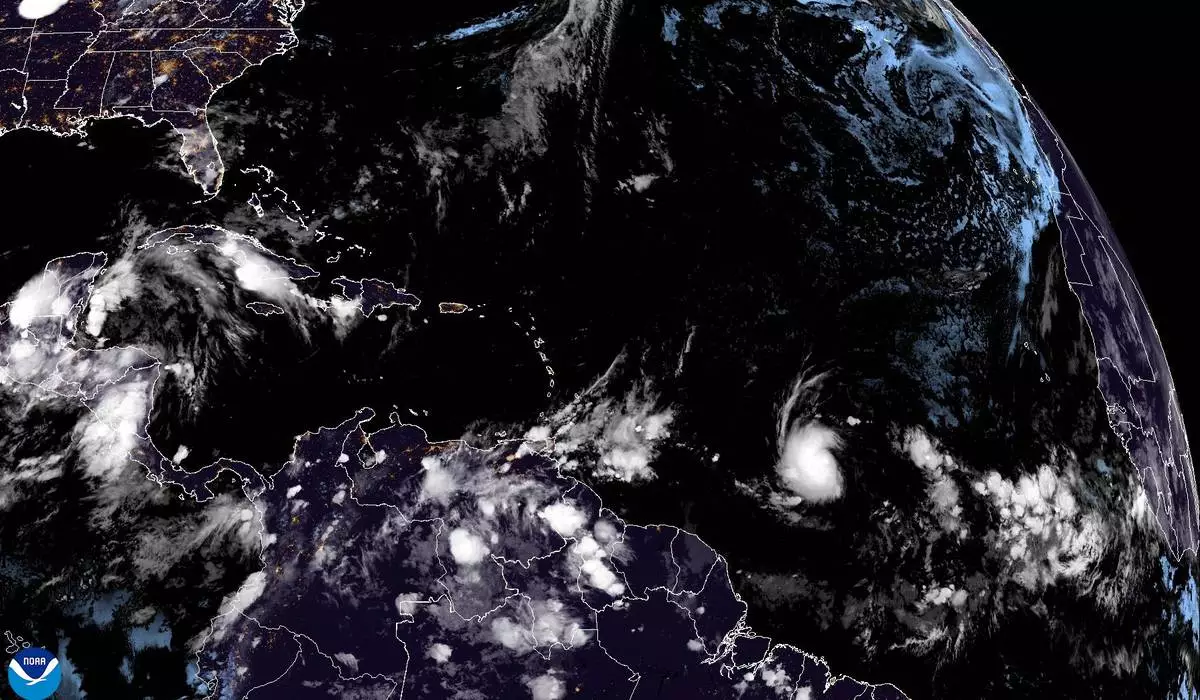
This National Oceanic and Atmospheric Administration satellite image taken at 3:10am GMT shows tropical storm Beryl, lower center right, as it strengthens over the Atlantic Ocean on Saturday, June 29, 2024. The storm could strengthen into the year's first hurricane before it reaches the Caribbean Sea early next week. (NOAA via AP)
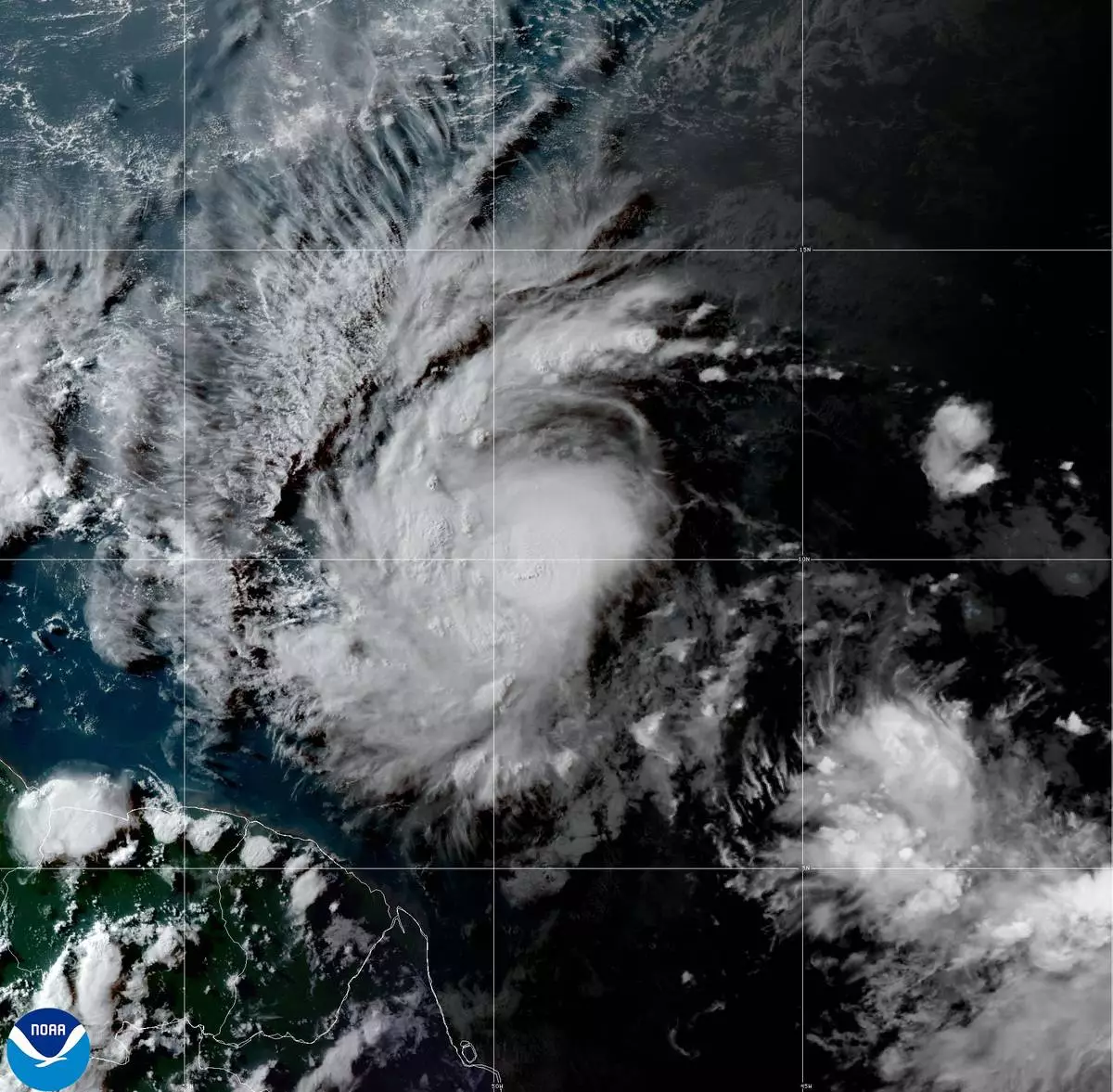
This National Oceanic and Atmospheric Administration satellite image taken at 4:50pm EDT shows hurricane Beryl as it strengthens over the Atlantic Ocean and churns toward the southeast Caribbean on Saturday, June 29, 2024. (NOAA via AP)
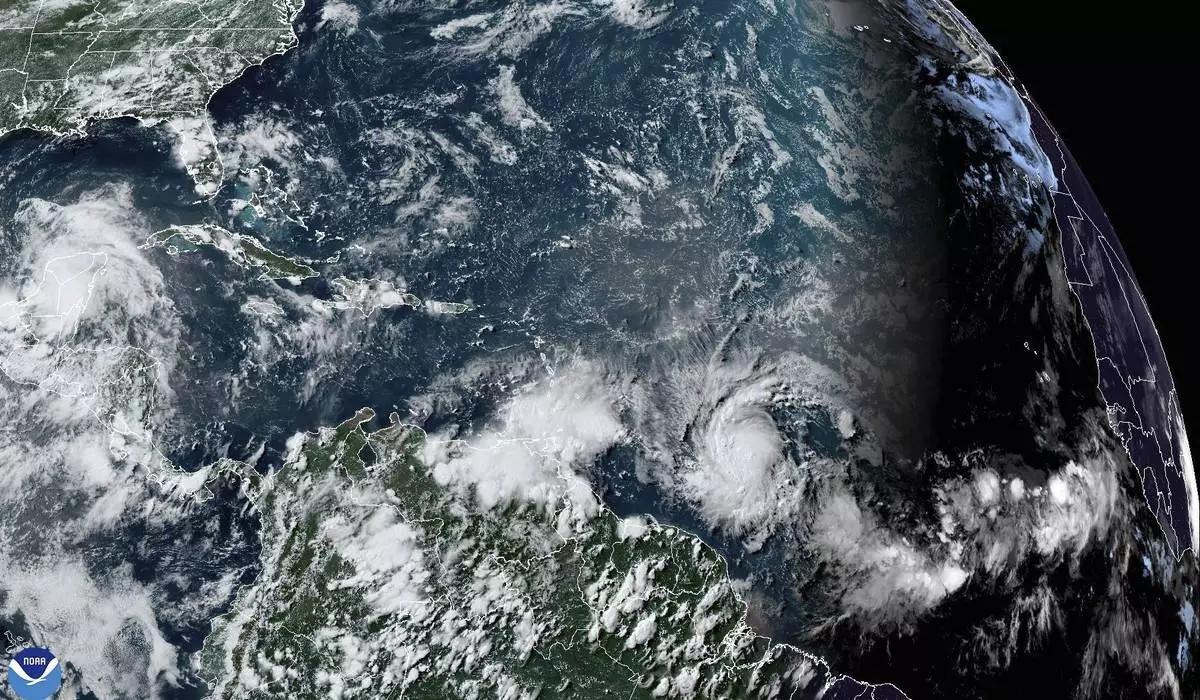
This National Oceanic and Atmospheric Administration satellite image taken at 4:20pm EDT shows hurricane Beryl, lower center right, as it strengthens over the Atlantic Ocean and churns toward the southeast Caribbean on Saturday, June 29, 2024. (NOAA via AP)



